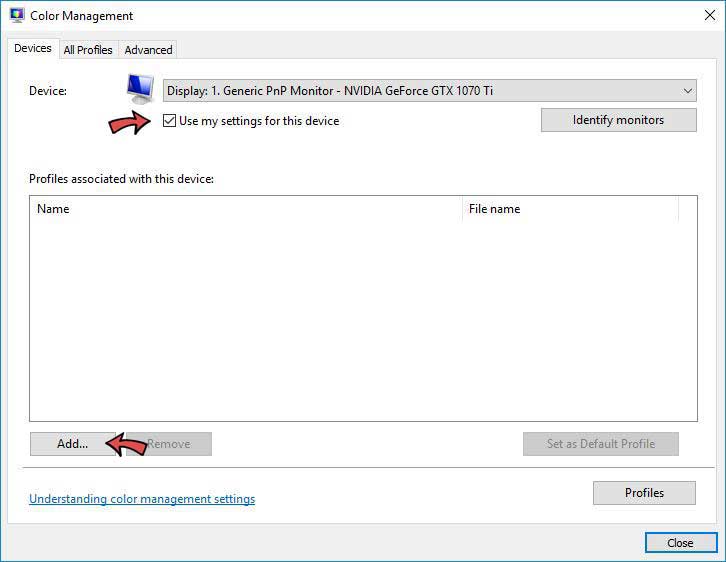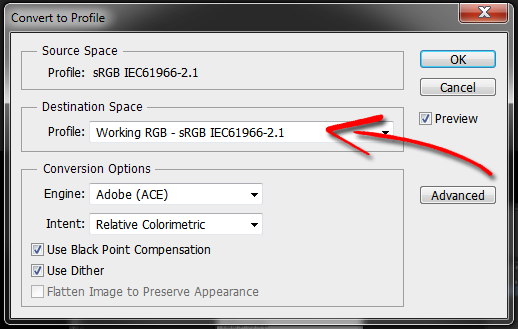

- #Install icc profile for monitor how to
- #Install icc profile for monitor install
- #Install icc profile for monitor driver

#Install icc profile for monitor how to
This article is about showing you how to use any ICC profile you’d like in GIMP and then the choice can be yours.


It’s not necessary to use the Pro Photo RGB gamut for all your editing, Adobe 1998 RGB does a pretty good job. And while the full range of the Pro Photo RGB gamut can’t be faithfully reproduced on most consumer monitors today, using a larger gamut does aid in more accurate color printing. Using a gamut that allows for a larger color representation allows for more accurate colors when printing. As a simple means of diagramming this, the image at left, from the Adobe whitepaper A Color Managed Raw Workflow by Jeff Schewe and Bruce Fraser, shows how each gamut can reproduce only a certain segment of the total visible color spectrum. While this color space works well for images you wish to view on a screen, its color gamut (range of colors) is more lacking than, say, Adobe 1998 or Pro Photo.
#Install icc profile for monitor driver
The display driver (or video hardware) performs gamma correction to the image.By default, GIMP comes with one ICC (International Color Consortium) profile preloaded and that is sRGB. Kernel-mode GDI formats the image for the display driver, based on such device characteristics of the device context (DC) as bit depth, resolution, and halftoning. Win32 GDI sends the image to kernel-mode GDI. If ICM is enabled, Win32 GDI uses the monitor profile to translate the colors in the image. The application sends the image to Win32 GDI. (See the Microsoft Windows SDK for more information.) The application enables ICM by a call to a Win32 GDI ICM function, such as SetICMMode. The application opens and then manipulates the image. In this case, with ICM enabled, two color corrections are applied to the image before it is displayed, as shown in the following sequence of steps. For example, if a user changes the gamma ramp in the video buffer, the monitor profile is not notified that such a change has occurred. Using a Monitor ProfileĪ monitor profile, unlike a printer profile, supports very little communication between the output device and an application. Hard-code the profile's path and file name in an application.īecause the default directory for monitor profiles is subject to change, hard-coding the profile's path and file name is not recommended. Refer to the profile in a monitor INF file.
#Install icc profile for monitor install
In the Windows Explorer, select the profile, right-click the name, and then click Install Profile. ProfileĪ user can install a monitor profile in three different ways: These profiles are described in the following table. Any user-mode application, such as a setup program or a word processor with graphics capabilities, can use a monitor profile, provided that ICM has been enabled, and that the application has knowledge of the profile's format.Īlthough you can create custom monitor profiles using third-party tools, you may be able to use one of the monitor profiles shipped with Windows 2000 and later operating system versions. This profile contains information about how to convert colors in a monitor's color space and color gamut into colors in a device-independent color space. A monitor profile is a type of device profile used for color management.


 0 kommentar(er)
0 kommentar(er)
